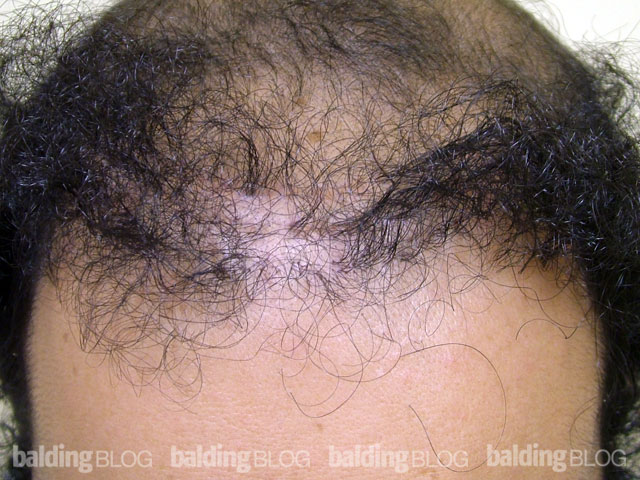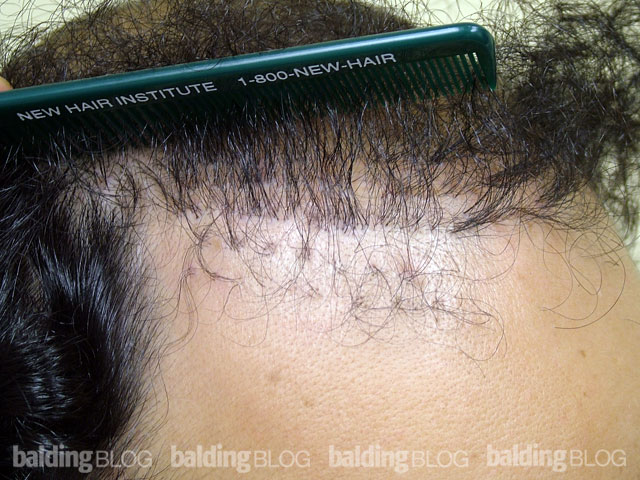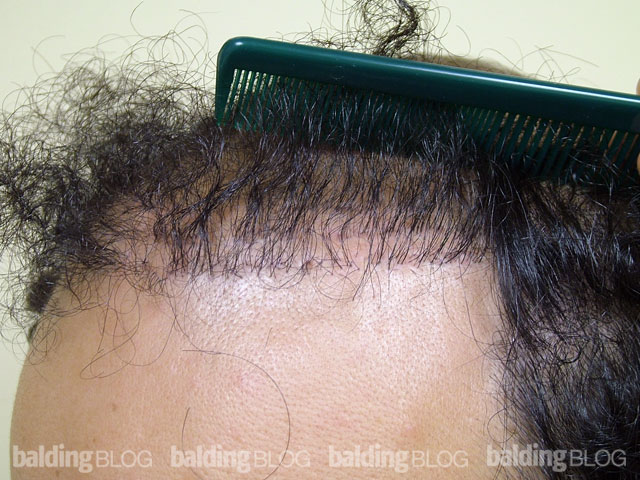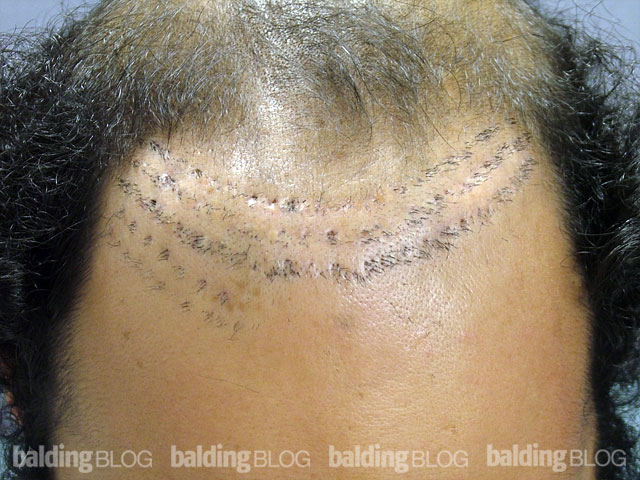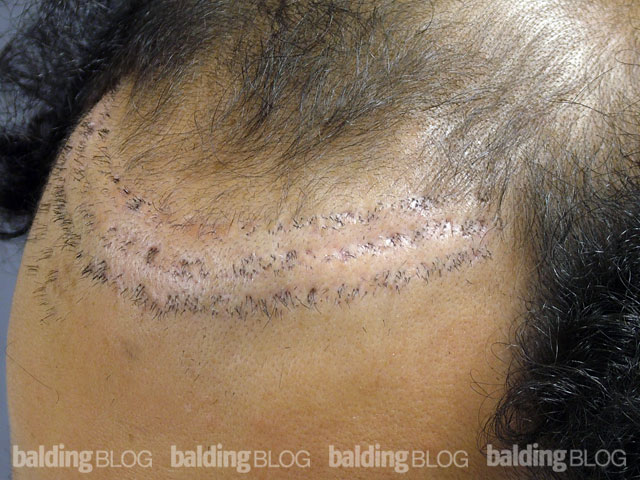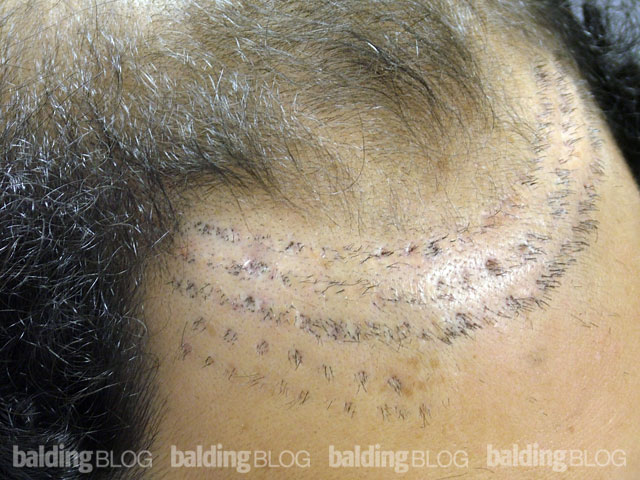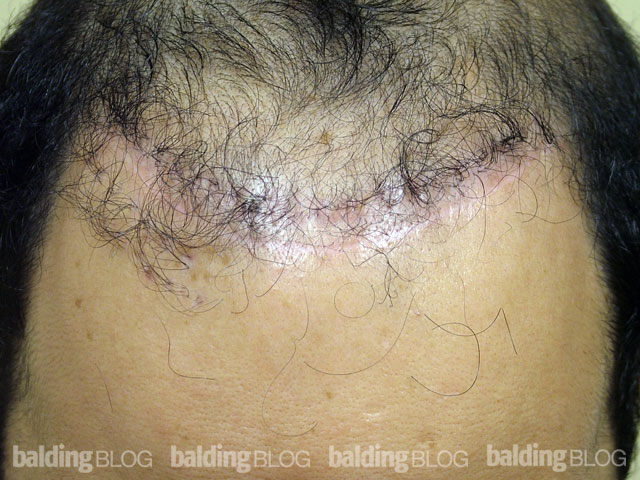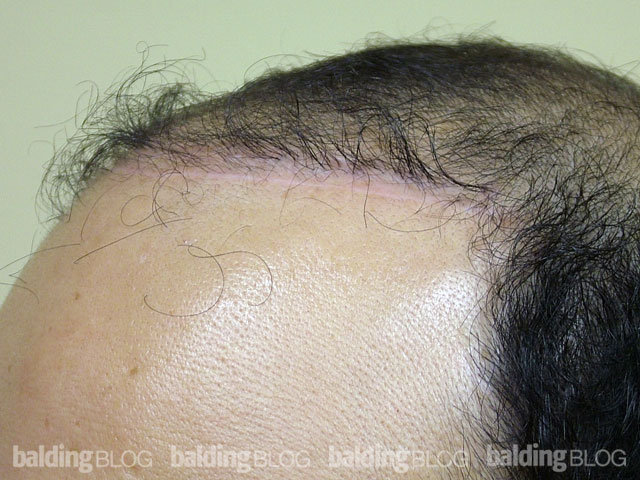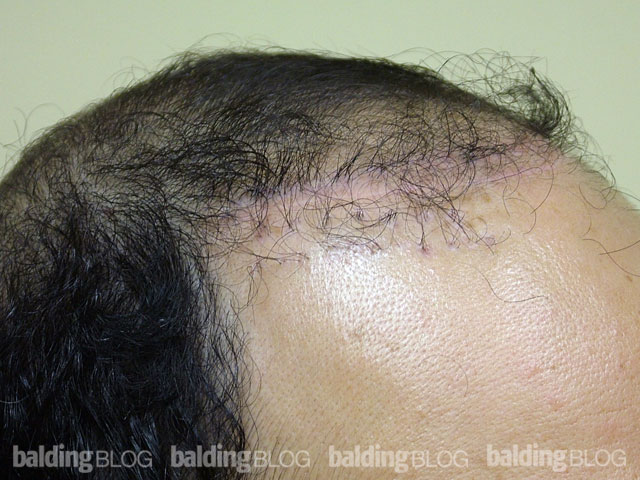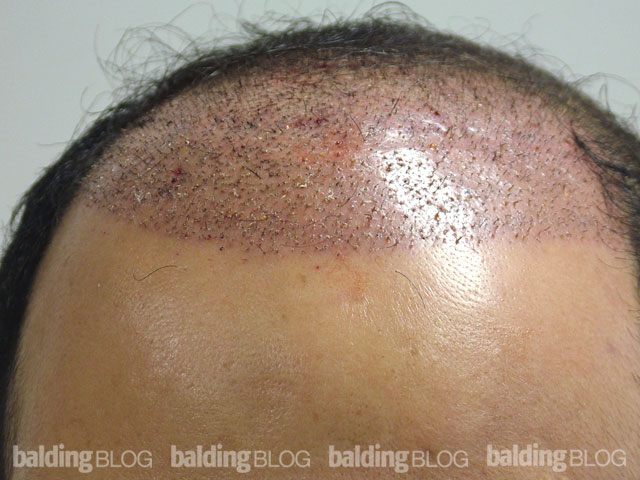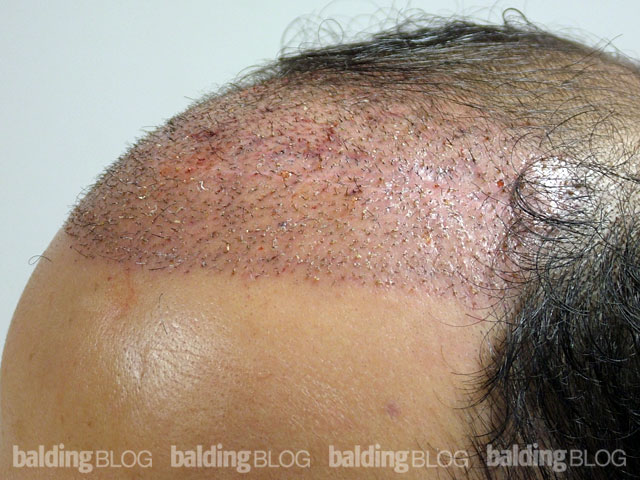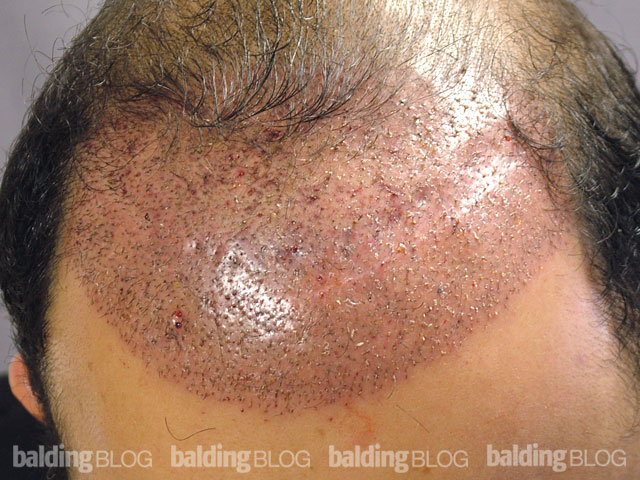Note: My answer to this question is very extensive and detailed, almost like a consumer guide for shoppers needing hair transplants. Please take your time in reading it and try to read between the lines, for there is much I did not say. The answer took me over a week to write, because the question was so pointed and so appropriate to what I am asked almost daily.
I am very confused about prices that are charged in your field and the associated estimates in what you guys want to do for me. I believe in capitalism so the wide range of prices does not bother me as much as the wide range of recommendations I get when I see a hair transplant doctor. This clearly impacts costs. My Norwood Classification is a Class 6. I have had recommendations as low as 1000 grafts in one or two sessions. That doctor told me that more than 1000 grafts in a single session could not be supported by the blood supply of the balding area. I have also been told by you earlier this year, that I could have as high as 4000 grafts in one or two separate sessions. No matter what the prices are, the difference between one session of 1000 grafts and two sessions of 4000 grafts is a huge cost differential. On one hand, I want to believe that 1000 grafts will work for me as it is easy to afford (the doctor charges $5/graft, or $5,000) but on the other hand, your estimate of between 4000-8000 grafts is so out of line with the lower estimate, I am a bit put off about having hair transplants at all. I have also seen other doctors and the wide range of estimates continue to amaze me. I want to be a good buyer so I want to compare apples and apples. Who should I believe?

Hair transplant costs are one thing and ethical practices by the physician are another. You must know what you are buying to value a hair transplant’s real cost to you. Add to that, the expectations you have and the probability of meeting them. Bottom line, a meeting of the mind between you and your doctor addressing your goals is what matters and only in the final results will you really know what you purchased.
In your particular case, the more of a perfectionist you are, the more hair you will want. If I projected 4000 to 8,000 grafts, I would have anticipated your desire for fullness is far greater than the average person. Then there is still another factor, your donor supply. If your donor density is high, then you can get more hair moved and more hair placed in the balding pattern you describe, but if it is not very high, then you will be hair limited and 4000 grafts might be out of the question for you. Some doctors will tell you exactly what they think you want to hear (rather than what is really best for you) – to make sure that you will proceed with the surgery.
Market Thresholds for Buying Cosmetic Surgery:
Most men will spend up to $5,000 for a cosmetic procedure without too much thought. Above this, cost will come into the decision making process and the higher above $5000, the more difficult will be that decision process. The question you need to think about is: Was the quote a lowball estimate, just enough to ‘get me into the surgical chair’ and make me think that $5,000 will give me what I need/want? A quote over $10,000.00 may turn away a potential patient, but I would rather do that then have you buy a hair transplant and then be disappointed in the decision you made. Disappointment here, unfortunately, means more work and more money than you were expecting. That happens far too often when the goal of the doctor is to make the deal, rather than to achieve your goals. So I always try to sound out the patient’s expectations and for some who I feel have very high expectation, if the donor supply can support the harvest, my recommendations may be higher than on the same balding pattern in a person with lower expectations. For a pricing point of view, we have a sliding scale for the larger sessions to make economies of scale work for both patient and doctor.
To repeat one more time, my policy has always been to try to understand the patient’s wants, his expectations and match these with his supply of donor hair, his degree of balding and, of course, his pocketbook. Estimating the number of hair grafts needed is both an art and a science. If you look at our photo album of more than 200 patients, you will see before and after pictures that not only show the results and outcomes from a hair transplant, but how many grafts the patient actually received. With over 200 patients in this album and thousands over the years, I have come to understand that Class 6 patients take far more than 1000 grafts to get any reasonable degree of fullness. In my experience, Class 6 patients generally take in excess of 5,000 grafts to get reasonable fullness, unless the hair is coarse. The reality is that, having a balding Class 6 pattern, you probably lost 50,000 hairs already. With an average of 2 hairs per graft, a 4000 graft case will only put back 8000 of the 50,000 hairs you lost (16% of the lost hair from the Class 6 pattern). What the doctor who quoted 1000 grafts is saying is that he believes that 2000 hairs (1000 grafts) or 4% of your original number of hairs will complete your process. A very far stretch indeed!
You could not have produced a more illustrative point by citing this huge difference between my recommendation and that of the doctor you used in your example. I will make certain assumptions from the clues you gave me to answer your question as to why my recommendations were so high. You said our clinic recommended 4000 grafts in one or two separate sessions, which means that:
- We have recommended as much as 8000 grafts (16,000 hairs)
- Your donor supply and donor densities are well above normal (we would rarely recommend high numbers like these without good densities and good scalp laxities)
- You have a lighter skin color and a dark hair color producing a higher contrast between your hair and skin color
- Your hair is finer than normal hair weight, which would require more grafts (more hair) for a Norwood Pattern Classification of 6 (a coarse hair could have 5 times the weight of a fine hair)
- You are a perfectionist with very high expectations
Now let’s look at the variables before us that relate to the philosophy of the physician’s practice, his team, and his expected results.
Just how good is the doctor’s staff? Are they efficient? Do the technicians prepare follicular units from the donor strip when dissecting the grafts? Are follicular units better than other grafts and does the doctor actually prepare them or say that they do? Preparing follicular units, which in my opinion is far superior than any other graft because it is just the way God put you together, is more than a term. It is more difficult to prepare grafts with a microscope and the process is meticulous and slower than non-microscopic dissection. Even with microscopes, you may not be getting follicular units, so how would you know this? If the doctor was not honest about what he was going to do, would you ever know?
The problem here is that the patient chooses the doctor thinking that they would adhere to a method that everyone agrees is a standard (like an ounce of gold). But alas, this naiveté points out that no such standard really exists. We have spent many years developing the NHI method of follicular unit transplantation, and are confident that it is the standard that should be followed. Our research has been published in the finest medical journals in the world (see Medical Publications), and it is readily available to physicians and patients to read. You must be sure that your doctor is not posing as a ‘fox guarding the hen house’ because you pay for honest or dishonesty, good or bad techniques, and you pay not only in money, but in successful or unsuccessful results that are with you for the rest of your life. I hope this is not frightening you, but like someone doing a face lift, experience, skills and integrity can not be compromised or the face might turn into an ugly mask. I am not pleased when I see deformed patients from either old hair transplant procedures (before the modern era when transplants were obvious but sold as undetectable) or bad modern work (which I unfortunately see far to often in my office today).
The Surgical Staff:
Proper training of staff is just the first part in assembling a world class team. Once a team member has the basic skills, the more experienced staff teams positively impact the quality of the procedure. Some of the ways are: (a) faster surgeries, (b) keeping the hair out of the body for shorter periods of time, (c) producing less trauma to the grafts in their handling and trimming process, and (d) reducing the overall length of the surgery with less anesthesia administered. This should translate into a higher graft survival rate, a very low infection risk, a safer surgery and great results with a predictable ‘naturalness’ and fullness that reflects your hair characteristics. Even with a highly experienced team that has a good clinical supervision, follow-up training, having a positive work atmosphere and excellent attitudes, the blend of a good doctor and an outstanding well organized team are required to ensure that the patient will have the best results.
The Grafts:
There are hair grafts called MUGs (multi-haired follicular groups), similar but not identical to what used to be called minigrafts. These grafts often contain 2-7 hairs each, made up of more than one follicular unit. When priced per hair, these grafts are clearly cost effective and very competitive to follicular unit transplantation (FUT), but they have a pluggy element in their appearance, particularly when looked at from close up. These MUGs and minigrafts are frequently sold as grafts, a term that each doctor may define differently. These larger grafts may be performed by doctors who lack the experienced teams of people to produce the more delicate grafts that consist of individual follicular units, or, the patient may want to achieve more fullness for the price and is willing to sacrifice some modicum of detection for it. Some doctors have done well with the larger grafts. The lower the costs per ‘graft’, the easier it is to sell the service and the more affordable the grafts seem to be. One doctor told me that he sells two classes of grafts, (1) those that are equivalent to the ‘first class ticket on an airline’, the true follicular unit transplants (FUTs), and (2) the equivalent to the coach seat on the airline (MUGs or minigrafts). Both airline tickets get you to where you want to go, but one is clearly ‘better’ in some respects to the other. I personally do not believe that doctors, who sell MUGs or minigrafts, think that these grafts are as good as traditionally pure FUTs and I think that they firmly believe that MUGs are good enough for most people. I may not agree with that approach, but that is strictly my opinion. But considering that the price is less per hair, doctors who sell these MUGs or minografts get an edge when selling hair in a competitive market and when the finest possible quality is not the most important consideration for the prudent, cash starved buyer who wants or needs more and more hair.
I have seen many patients with MUGs and minigrafts at the meetings, and for the darker haired individual with lighter skin, they do not compete in quality to follicular unit grafts and rarely do they meet my standards. However some people with gray, blonde, or African hair can look pretty good with MUGs and minigrafts. I have seen many patients who come to my office to complain about the pluggy appearance of MUGs or minigrafts, particularly in the obsessive-compulsive, detailed-oriented patient with high contrast hair and skin color. So, in this third example, we are talking about quality as a spin-off of the cost formulae in particular instances. The point (for the doctor) is that the patient needs to know what you are selling them. There is no substitute to really learning about what you are going to buy.
Follicular Unit Extraction (FUE) is another place you must be careful when considering a hair transplant based solely upon price. A graft removed by FUE has a risk of being damaged when it is extracted. That damage can come from: (a) grafts that have many transected hairs when they are taken out producing fewer hairs removed, (b) grafts that are buried inside and left behind which can cause infections and foreign body reactions, (c) grafts that lose the fat that surrounds the grafts making them vulnerable to fast drying or growth center damage which will impact graft survival and hair growth. At a meeting in the past year, a series of doctors demonstrated their skills in FUE and each had claimed expertise in the art, but alas, only one (I was told) had good hair yields. This is no surprise to me, no surprise at all. Some doctors claim expertise with limited (or no) experience. When I published the first paper ever published on this technique, a doctor who had built no significant presence in the field announced expertise within 60 days of my publication. I remember him well because he called me to ask me how to do the procedure and I gave him advice on some of the details he wanted to know. When I read about his self-declared expertise, I felt sorry for the patients who would fall into the ‘spider’s web’.
Microscopes:
The proper use of the microscope absolutely increases the number of grafts taken from any given donor area (see Dissecting Microscope versus Magnifying Loupes). By not using microscopes, doctors will waste valuable donor hair. Although this does not directly increase the cost of the procedure in dollars, it requires a wider donor area to be harvested when the efficiencies of the microscope are not employed. This destroys donor hair in the donor bank, limiting the long-term yield for possible future hair transplants. The larger the area of scalp that is removed, the more will be the unnecessary wasting of your valuable (and limited) hair resources. Any hair that is damaged during surgery is a lost asset that you will never again see or be able to use.
Growth:
Growth occurs after the patient leaves the doctor’s office – long after you have paid for the procedure. It takes 7-8 months for reasonable fullness to occur. One physician I know of has his staff routinely prepare single hair grafts out of two and three hair grafts, damaging [I am sure] the growth center on some of the single hairs, so it would be reasonable to expect less growth than if they graft had been prepared the NHI way. In our practice, we do everything possible to preserve the integrity of the follicular unit, so that hair growth centers are not damaged. That ensures that our graft growth will be high, while doctors who sub-divide follicular units just plainly kill-off hair and compromise long-term yield and fullness.
Price:
There is a difference between buying a product and a service. I can buy a BMW and look around for the dealer with the best price and be confident that the car was made under a uniform standard, in a manufacturing process remote from buyer or seller interference. The mass produced vehicle sold at Dealer A will be the same as the vehicle at Dealer B, so price becomes the most important variable to consider. With a service that is customized just for you, there are many more variables to consider.
So how does one determine value? Clearly, when one ‘price shops’ a hair transplant, most people focus upon the per graft price, as this is how most doctors calculate their fee. But you should ask, ‘what contributes to the value beyond the obvious price per graft fee structure?’ The answer is defined in my example where the doctor had instructed his staff to cut the grafts into their smallest elements (individual hairs) in order to increase the graft count so that his income would increase. In this example, the patient ended up with substantially less total hairs (and less fullness) than he could have gotten by doing it right. To make matters worse, he may have selected the doctor based upon quoted prices, only to find out that he got less hair and paid more overall, and to rub salt into an already angry wound, hair growth will probably be far less than what he actually had transplanted. He would have massively overpaid for what he got.
If you purchase 2000 follicular units, but you get half of the 4000 hairs a typical male would have, isn’t this an example of negative value? If the hairline is put in the wrong place, or the grafts are distributed in such a way that it does not maximize the demand/supply ratio, is that worth a discount? If the grafts are place too widely, requiring more surgeries, or too closely so that they may not grow in skin that is incapable of supporting that many grafts, was that worth the discount? If the grafts are trimmed too closely, or get dried out, or manhandled by being crammed into recipient sites by less experienced staff, causing the grafts to not grow, is that worth the discount?
I can go on and on, but value is not what you pay per graft, but the entire package of an ethical doctor, one who uses well trained and disciplined supportive staff who are focused upon quality, speed and your welfare and comfort (and are well paid so the doctor retains staff over time), etc… The doctor can hire people for a lower wage, but the doctor will not keep staff by underpaying them. You want the doctor to have long term employees who are loyal and feel that the doctor respects them recognizes their worth, staff that can understand that your welfare (as a patient) is tied to their welfare. Only some of the things I have just mentioned reflect the surgeon’s activities, while others reflect staff and organizational issues that add up producing a great results in a well run office.
Judgments:
Judgments reflect skill, education, training, logical thought processes and some wisdom (which takes time to obtain). Ethical doctors make sure that their judgment is not clouded by money.
When you put this all together, you will see that this is nothing more complicated than the old axiom, “Let the Buyer Beware”. Like buying a car, buying a service requires good, extensive research. A good buyer is an educated buyer. I would expect that those of you, who are good buyers, will take the time to learn the lessons I have outlined here. Once you are ready, consider the following:
- Does the doctor speak with authority? (see my CV, Medical Publications)
- What does the medical community think of the doctor or the medical group and the quality of his/their work? (see 2004 Golden Follicle Award)
- How does the doctor relate to new candidates for surgery? (see NHI Open House Events)
- Does the doctor treat patients with great respect? From the first contact with NHI, our goal is to make the patient feel comfortable. There are no salesmen at NHI, every prospective patient meets a doctor 100% of the time. This allows the doctor the opportunity to learn about the patient (and vice versa) so bonding can occur. The patient can tell, almost immediately, if he/she trusts and/or likes the doctor. After the initial consultation, 100% of our patients receive a letter which fully document not only what happened in the consultation, but also gives a written estimate reflecting the scope of the proposed work and the costs for that work.
- Do the doctor’s estimates come close to the actual outcomes? Lowballing is an unethical practice that we have taken a position against for years. Sometimes when unscrupulous salesmen are used, they sell the doctor’s service like a used car. When a doctor uses high pressure sales tactics, it tells you much about the doctor, his integrity and his need to push for a hard sell. A good reputation does not require a hard sell. The position we have taken on this issue has left me, at times, personally vulnerable from those that employ such tactics. But I have never veered away from a taking a strong position when it comes to defending the rights of patients over the rights of the business or other doctors, if they are not using ethical practices. There are many ethical doctors out there, find one before you hire a shoddy doctor to save you a few bucks.
- Does the doctor innovate? Is he a leader or a follower? (see Innovations and Contributions in my CV)
- Has the doctor been bombarded with legal issues? Our medical legal record is clear and clean. Make sure that you have done your due diligence by checking as many sources as you can find to determine the history of the medical practice.
- Is the doctor open to listening to your needs when you meet with him/her, or does he/she tell you what he wants to sell you? After our consult, we send a letter detailing our consultation. This is a great way to find out if we have a clear understanding of your goals so it is always put into writing.
- Does the doctor or salesman try to find out how much money you are planning to spend before giving you an estimate for proposed work? The doctor’s first priority should be what is or isn’t on top of your head, not what’s in your wallet. Run for the hills if you think that you are someone’s retirement account. Do you feel that the doctor is trying to pick your pockets? There is nothing wrong with being a businessman (I like to think that the two are compatible) but the doctor must show real caring for you and place your agenda first. Consider your gut reaction to the experience you have with your visit to his/her office – and pay attention to it.
In conclusion:
Let the buyer beware!




